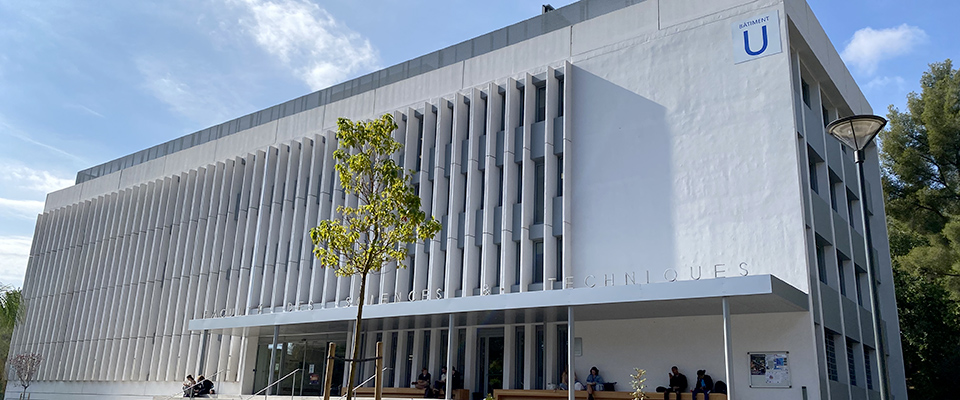- [M1/M2] N. Boizot (LIS) Applications des champs de directions à l’étude des empreintes digitales. Voir ce fichier.
- [M1/M2] F. Chittaro (LSIS) Le Grand Théorème de Picard.
Les Théorèmes de Picard concernent le comportement des fonctions analytiques ; en particulier, le grand Théorème de Picard affirme que, dans un voisinage d’une singularité essentielle isolée, une fonction analytique atteint tous les valeurs complexes, sauf au plus un.
Dans ce projet, l’étudiant doit étudier la preuve du Théorème, en particulier pour ce qui concerne le rôle de l’hypothèse que la singularité est isolée. - [M1/M2] F. Chittaro (LSIS) Le système de Heisenberg en géométrie sous-Riemannienne et géométrie sous-Finslerienne.
Le but de ce projet et d’aborder les premières notions de géométrie sous-Riemannienne, en étudiant le célèbre problème de la minimisation de la norme L2 pour le système de Heisenberg.
Le projet pourra poursuivre avec l’analyse du problème de minimisation de la norme Lp (de façon numérique ou analytique). - [M2] F. Chittaro (LSIS) Régularité des vecteurs propres autour d’une intersection entre valeurs propres.
Le Théorème de Kato-Rellich affirme que les vecteurs propres d’une famille analytique d’opérateurs linéaires dépendant d’un seule paramètre reste analytique, même en présence d’intersections entre les valeurs propres.
Que peut-on dire sur des familles d’opérateurs qui dépend de façon C^k de la perturbation ? - [M1] S. Meradji (IMATH) Slope terrain effect investigation using fire propagation FireStar3D model.
A 3D physics-based model referred to as « FireStar3D » has been developed in order to predict fire propagation in natural environment. It consists briefly in solving the conservation equations of the coupled system consisting of the vegetation and the surrounding gaseous medium. The model takes into account the phenomena of vegetation degradation (drying, pyrolysis, combustion), the interaction between an atmospheric boundary layer and a canopy (aerodynamic drag, heat transfer by convection and radiation, and mass transfer), and the transport within the fluid phase (convection, turbulence, gas-phase combustion). The objective of this work is to evaluate using the FireStar3D source code (written in Fortran90/95 and parallelized with OpenMP directives) the rates of spread of grassland fires for different wind speeds and terrain slopes, and compare these rates to those obtained during experimental fires. - [M2] S. Meradji (IMATH) Firebrands and spotting mathematical model implementation in fire propagation FireStar3D tool.
A 3D physics-based model referred to as « FireStar3D » has been developed in order to predict fire propagation in natural environment. It consists briefly in solving the conservation equations of the coupled system consisting of the vegetation and the surrounding gaseous medium. The model takes into account the phenomena of vegetation degradation (drying, pyrolysis, combustion), the interaction between an atmospheric boundary layer and a canopy (aerodynamic drag, heat transfer by convection and radiation, and mass transfer), and the transport within the fluid phase (convection, turbulence, gas-phase combustion). The objective of this work is to construct a mathematical model related to a spotting ignition by lofted firebrands and ultimately to implement it numerically in the FireStar3D source code (written in Fortran90/95 and parallelized with OpenMP directives). Spotting ignition by lofted firebrands is a significant mechanism of fire spread, as observed in many largescale fires. The role of firebrands in fire propagation and the important parameters involved in spot fire development wille also be investigated theoretically and numerically. - [M2] G. Faccanoni (IMATH) Cubic equations of state for two-phase flow LMNC model with phase transition.
We investigate a simplified model describing the evolution of the coolant within a nuclear reactor core (e.g. of PWR type or of RNR-Na type). This model is named LMNC (for Low Mach Nuclear Core) and consists of the coupling between three PDEs together with boundary conditions specific to the nuclear framework. The fluid is modeled by an Equation of State (EoS) describing the pure liquid and vapor phases and the phase transition. We consider here some cubic EoS with the Maxwell area rule.Simulations 1d with Matlab/Octave or Python, 2d with FreeFem++. - [M1] C-A. Pillet (CPT) Dynamique quantique des mesures répétées.
Un processus de mesure est une opération permettant d’extraire de l’information d’un système physique. Dans le régime quantique, ces processus ont un statut particulier. Bien que la mécanique quantique n’aie jamais été mise en défaut, les problèmes conceptuels posés par la mesure ont de ce fait hanté l’histoire de son développement, dès son origine. Le raffinement des techniques expérimentales dont disposent aujourd’hui les physiciens pour sonder le monde quantique permettent d’accéder au coeur des processus de mesure et de tester ainsi les prédictions de la théorie (c.f. prix Nobel 2012 de S.Haroche et D. Wineland). Bien que la description d’une mesure soit très simple du point de vue mathématique, la répétition de cette mesure génère un système dynamique encore peu étudié et mal compris. L’objectif de ce stage est l’étude d’un exemple simple de mesure répétée dont les propriétés statistiques sont encore inconnues. - [M1/M2] M. Rouleux (CPT) Intrication multimode pour des fermions.
Voir ce fichier. - [M2] M. Rouleux (CPT) Series spectrales et points de Lagrange.
Voir ce fichier. - [M1/M2] P. Véron (IMATH) Information set decoding of lee-metric codes over finite rings.
Voir ce fichier.
Entreprises et autres Universités.
- [M2] Association Recherche et Avenir (Draguignan) Statistiques extrêmes 1D et probabilités conditionnées de paramètres extrêmes (analyse 2D).
Voir ce fichier. - [M2] ALTEN Plusieurs propositions de stages.
Voir les deux fichiers suivants, provenant des sites de Paris et Rennes, et contenant chacun plusieurs propositions : fichier-Paris et fichier-Rennes.

